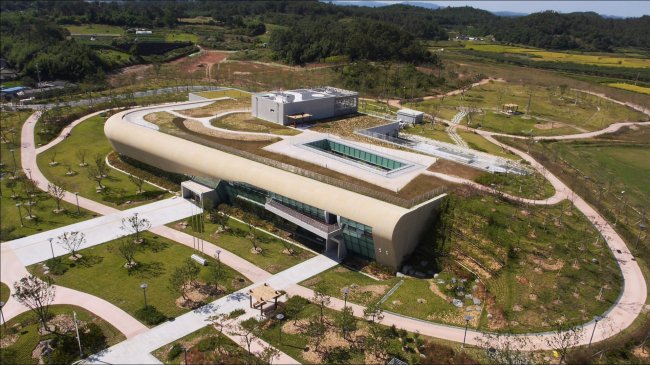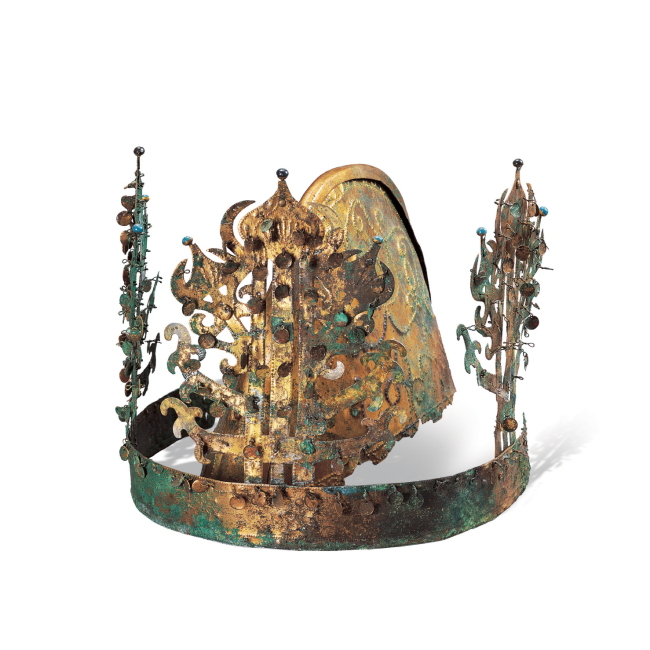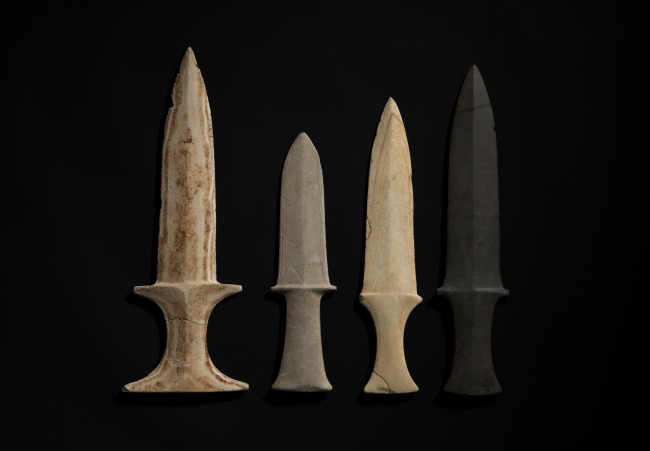
The Naju National Museum, the 13th central government-funded museum under the Ministry of Culture, Sports and Tourism, will open to the public on Nov. 22.
Located about a 20 minutes’ drive from central Naju, South Jeolla Province, in a rural setting, the museum will be a place where the past meets the present and future of the Yeongsangang River area, said Park Jung-hwan, director of the museum.
“In the past, we built national museums in city centers, but this time we are reenacting history: The current location was the heart of Naju during the Joseon (1392-1910) and Goryeo (918-1392) periods,” he said.
Naju, a breadbasket region known for rice and pears, was historically known for its prosperity and as being home to an ancient civilization dating back to the prehistoric and Proto-Three Kingdom Age (A.D. 0-300).
Located about a 20 minutes’ drive from central Naju, South Jeolla Province, in a rural setting, the museum will be a place where the past meets the present and future of the Yeongsangang River area, said Park Jung-hwan, director of the museum.
“In the past, we built national museums in city centers, but this time we are reenacting history: The current location was the heart of Naju during the Joseon (1392-1910) and Goryeo (918-1392) periods,” he said.
Naju, a breadbasket region known for rice and pears, was historically known for its prosperity and as being home to an ancient civilization dating back to the prehistoric and Proto-Three Kingdom Age (A.D. 0-300).


A gilt-bronze cap from the 9th Tomb at Sinchon-ri (National Treasure No. 295) and gilt-bronze accessories and shoes as well as silverware from Bogam-ri, which are both located in Naju, will be highlighted in the first exhibition hall.
Also on exhibit will be a gilt-bronze headpiece from Andong Tomb in Goheung, a nearby county; earthen vessels discovered at Haenam; and other items that show active trade between the Baekje (B.C. 18-A.D. 660) and Silla (B.C. 57-A.D. 935) kingdoms, the museum said.
The second exhibition hall will present a collection of items that highlight the heyday of the South Jeolla region, especially Naju, and a section where people can see how historic items are maintained.
One distinctive feature of the museum is its open storage. Unlike other museums which hide “valuable assets” away from the public, the museum has installed glass walls that allow people to observe how the treasures are being managed even when they are not on display in the exhibition halls.
The museum has also adopted the near field communication system that allows visitors to listen to the explanation and view relevant photos on their smartphones near exhibited items. Visitors can also share articles and pictures via social media, including Twitter and Facebook, in real time.
“We are hoping that this will give people living on the other side of the world access to the culture of Yeongsangang River,” the museum said.
“The museum will promote the important indigenous culture of the South Jeolla area ranging from prehistoric times to the very contemporary. We will hold more than two special exhibitions a year to promote local culture and history,” Park said.
By Bae Ji-sook (baejisook@heraldcorp.com)
Also on exhibit will be a gilt-bronze headpiece from Andong Tomb in Goheung, a nearby county; earthen vessels discovered at Haenam; and other items that show active trade between the Baekje (B.C. 18-A.D. 660) and Silla (B.C. 57-A.D. 935) kingdoms, the museum said.
The second exhibition hall will present a collection of items that highlight the heyday of the South Jeolla region, especially Naju, and a section where people can see how historic items are maintained.
One distinctive feature of the museum is its open storage. Unlike other museums which hide “valuable assets” away from the public, the museum has installed glass walls that allow people to observe how the treasures are being managed even when they are not on display in the exhibition halls.
The museum has also adopted the near field communication system that allows visitors to listen to the explanation and view relevant photos on their smartphones near exhibited items. Visitors can also share articles and pictures via social media, including Twitter and Facebook, in real time.
“We are hoping that this will give people living on the other side of the world access to the culture of Yeongsangang River,” the museum said.
“The museum will promote the important indigenous culture of the South Jeolla area ranging from prehistoric times to the very contemporary. We will hold more than two special exhibitions a year to promote local culture and history,” Park said.
By Bae Ji-sook (baejisook@heraldcorp.com)
-
Articles by Korea Herald




















![[Today’s K-pop] BTS pop-up event to come to Seoul](http://res.heraldm.com/phpwas/restmb_idxmake.php?idx=642&simg=/content/image/2024/04/17/20240417050734_0.jpg&u=)